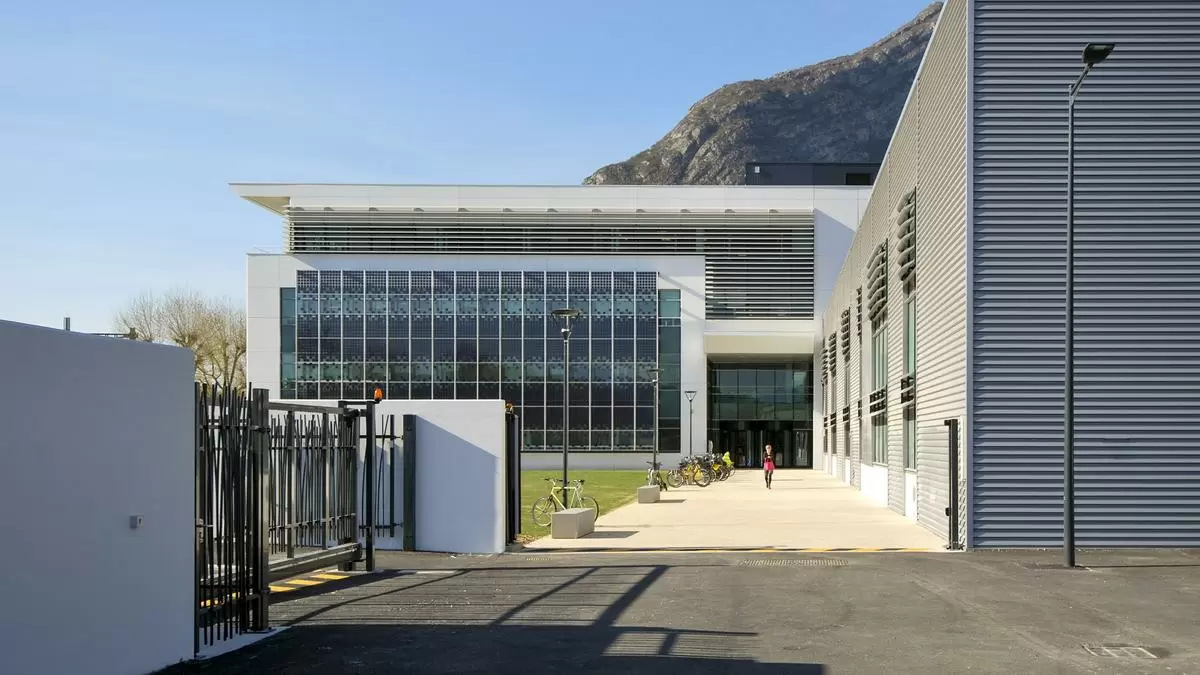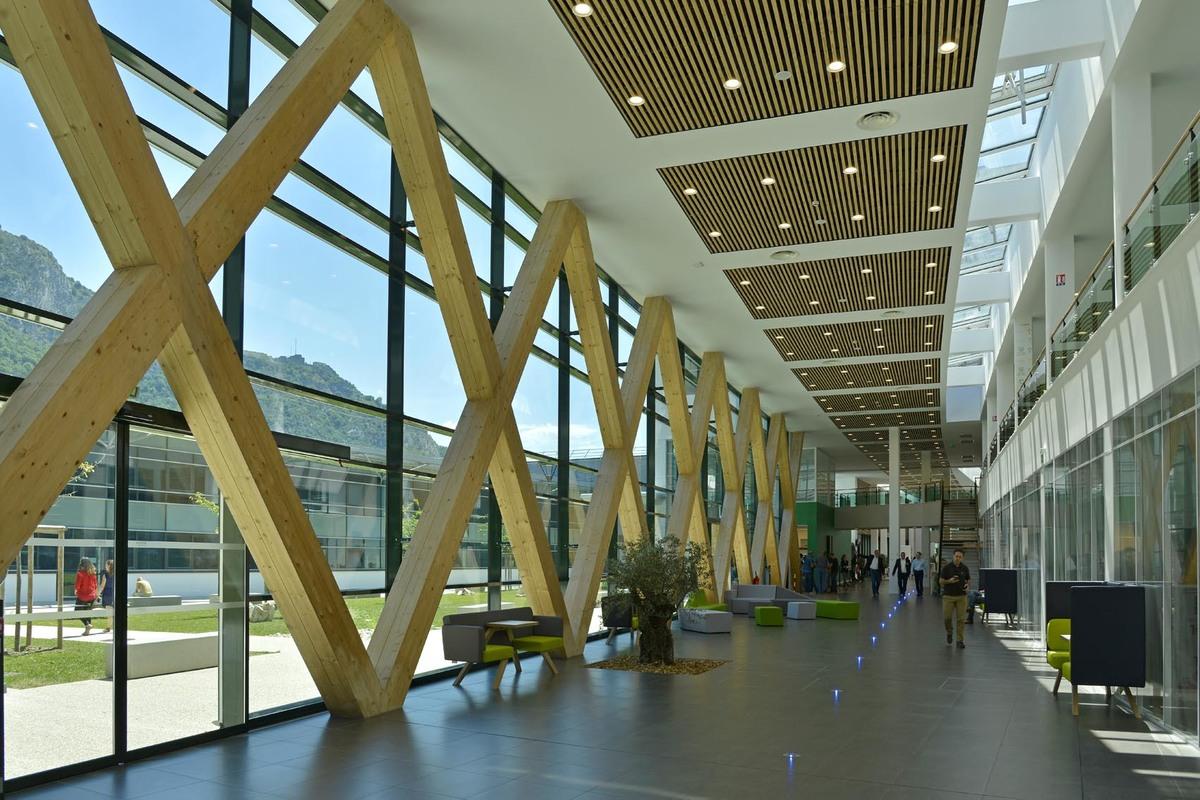Digital tools for energy efficiency
Project details
- Main leader : Schneider Electric
- Type of initiative : Individual initiative (company, etc.)
- Périmètre : France
- Localisation : 37 Quai Paul Louis Merlin, 38000 Grenoble
- Date de début : février 2017
Economy circular topics
- Responsible consumption
- Eco-design
- Extending useful service life
- Functional service economy
- Industrial and regional ecology
- Recycling
- Sustainable procurement
Wishing to bring teams together and improve cooperation, Schneider Electric launched a real estate project for two buildings with ambitious energy performance objectives. The first, called Technopole, has been occupied since early 2017.
A workplace designed as a living lab
Technopole was designed to optimize space while improving the use and satisfaction of the 600 people who work on the premises. It is also a “living lab” where Schneider Electric's know-how has been applied in the areas of innovation, collaboration, energy efficiency, environment and health. It mainly hosts teams of researchers and engineers who draw data from their workplaces to optimize the design, construction and operation of the buildings.
Qualitative benefits
Two objectives guided the design of Technopole: to create a building that is highly efficient in terms of energy and to integrate uses, i.e. the way occupants live in the premises. This approach combines comfort and savings.
Stages of the initiative
The people involved in the construction worked closely together to meet the Technopole's specifications and apply the LEED* label criteria . All the trades used a common tool: BIM. This digital model of the building or "digital twin" facilitates cooperation by the various people involved. It is also a tool for Schneider Electric’s R & D teams. In addition, the design choices were subjected to an energy simulation tool, highlighting their effects on the building’s efficiency. * Leadership in Energy and Environmental Design, an accreditation created by the Green Building Council in the United States
In France, the RT2012 regulation sets requirements for heating, air conditioning, domestic hot water production, lighting and auxiliaries (ventilation, etc.) but these items are no longer the biggest consumers of energy because of the progress made in this area. It is now necessary to give thinking to uses and other items such as printers, electrical outlets, PCs, etc.[1]
According to this philosophy, the Technopole building is controlled by usage. Energy is managed according to how the premises are occupied, these becoming a source of savings when they are empty. This happens regularly because mobility on site is high, employees’ time being divided between their offices and laboratories.
[1] Lessons learned from the European programme Homes, 2008-2013
Areas of activity
- Construction
- Energy
Resources
- Renewable energies
- Energy efficiency
Technical resources
Digital technology undeniably contributes to the building's energy performance through several functions:
- The design software used by building professionals
- The manufacture of data from sensors for the technical management of the building
- Information tools for stakeholders who operate the building: collection of data on comfort, energy, etc. in order to draw up dashboards
- The creation of data to fuel engineers' research.
Innovations in site design go hand in hand with new ways of controlling it. Room control is used to manage the building on a room-by-room basis, and not by item (light, heating, etc.).
Web link(s)
https://www.se.com/fr/fr/about-us/newsroom/actualites/schneider-electric-inaugure-technopole-a-grenoble-un-batiment-smart-grid-ready-intelligent-construit-dans-le-cadre-du-projet-greenovalley-52ab-636ff.htmlhttps://www.eclaira.org/library/h/eclaira-le-bulletin-numero-13-mars-2019.html
https://www.construction21.org/france/case-studies/fr/technopole.html

